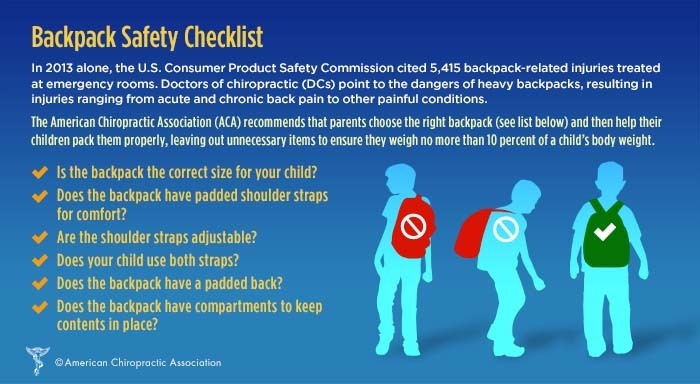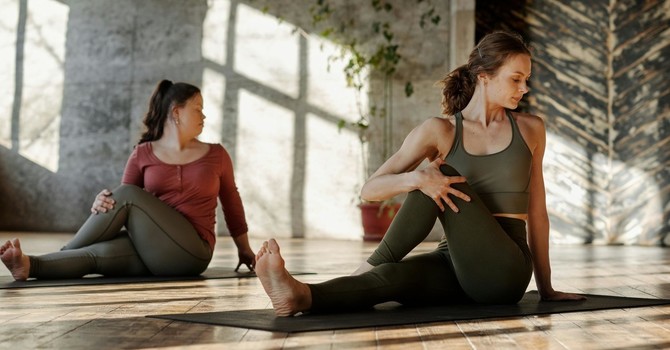
9 Tips to Consider Before Buying a New Backpack This Upcoming School Year
A trendy style backpack may be at the top of a students must-have list, but purchasers should look for other criteria as well. According to the U.S. Consumer Product Safety Commission, backpack-related injuries send an estimated 5,000 students per year to emergency rooms. More than 14,000 students are treated annually for injuries. And as any chiropractor will confirm, countless more suffer from unnecessary neck and back pain from heavy or improperly worn backpacks.
Backpacks are certainly practical, but lugging around heavy books, supplies, and other items day after day will cause discomfort and can lead to more serious problems. Here are some tips to help you choose the right backpack this year.
- The American Chiropractic Association and the American Academy of Pediatrics recommend that a backpack should not weigh more than 10 percent of the student’s body weight. Only pack what is needed for the day and leave the rest at home or in the locker.
- If carrying multiple heavy books is unavoidable, the student can opt to carry the largest book or two in their hands to help redistribute weight.
- Minimize weight by choosing a backpack made of lightweight material – i.e. no heavy buckles or heavy denim material.
- Purchase a backpack with an internal frame/compartments to distribute the load evenly.
- Bigger is not necessarily better. The more room there is in a backpack, the more the student will carry-and the heavier the backpack will be.
- Shoulder straps should be padded and both straps should be worn snuggly on the shoulders. No gaps should be visible between the student’s back and backpack.
- Wear the waist belt if the backpack has one. This helps distribute the pack’s weight more evenly.
- Put heavier items towards the back of the backpack, closer to the body so that it does not pull the backpack away from the spine.
- The backpack should be positioned directly on the upper and mid-back- between the shoulders, and not resting over the lower back or hips. The backpack should never hang more than four inches below the waistline.
- If pain persists even after the backpack is removed, call our office right away to schedule a check-up. Addressing problems early can minimize future trouble.




